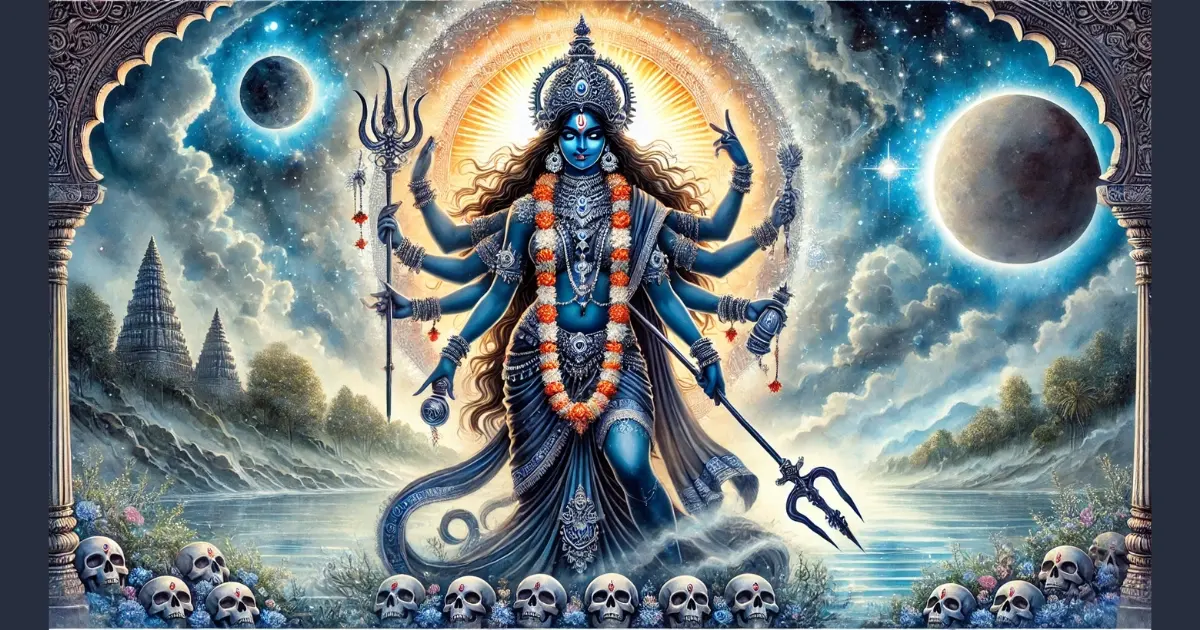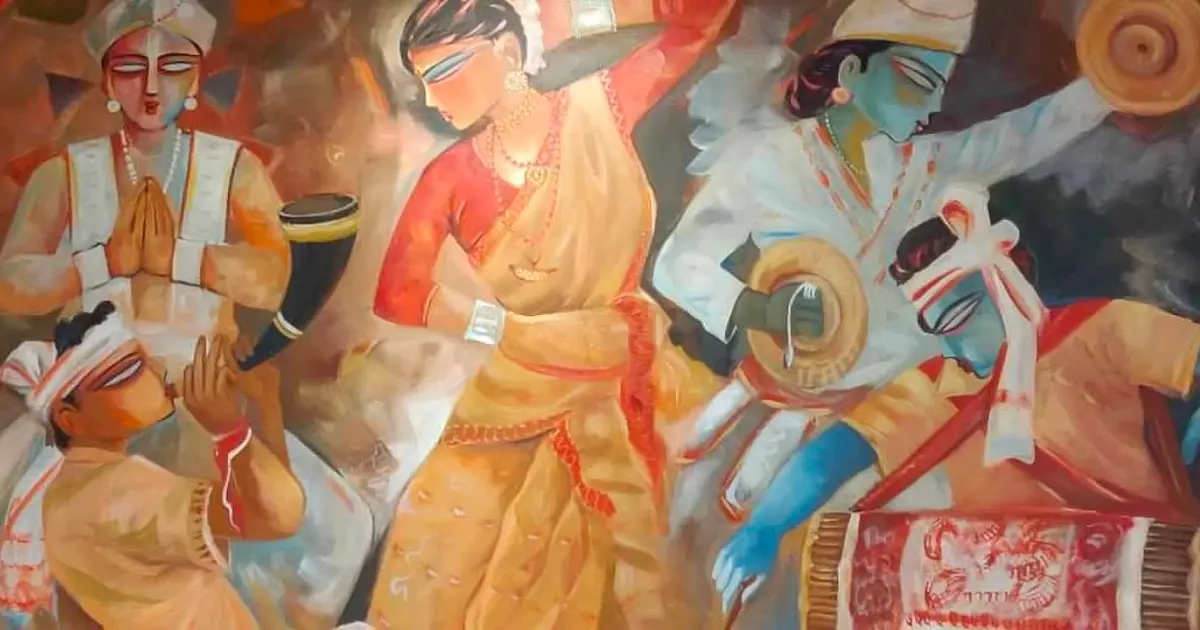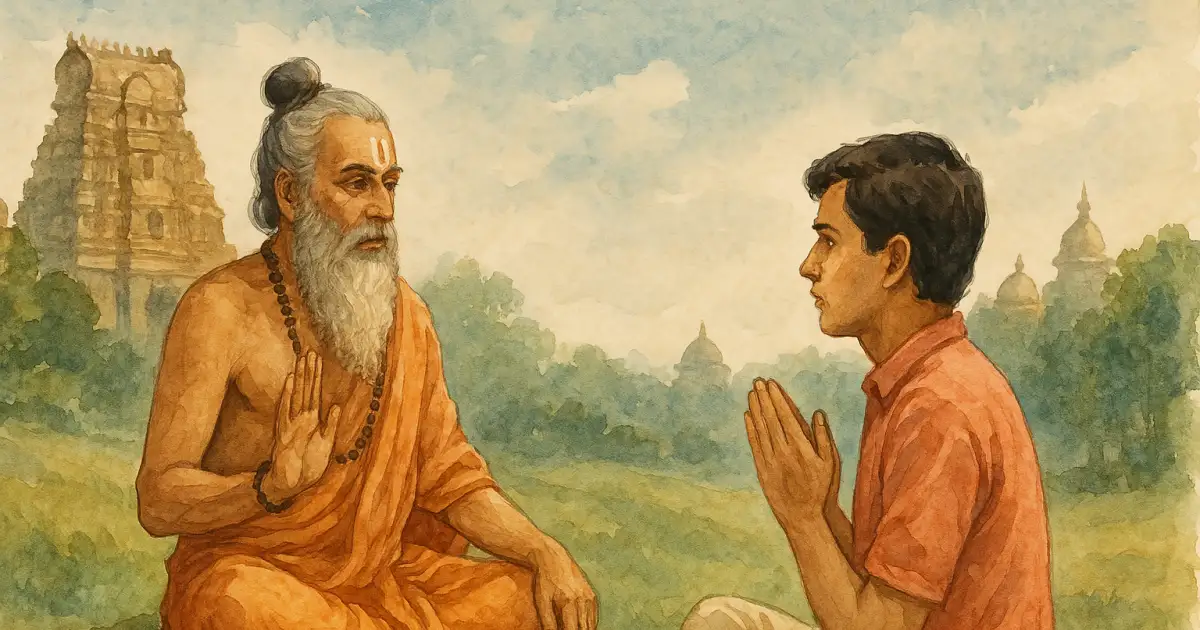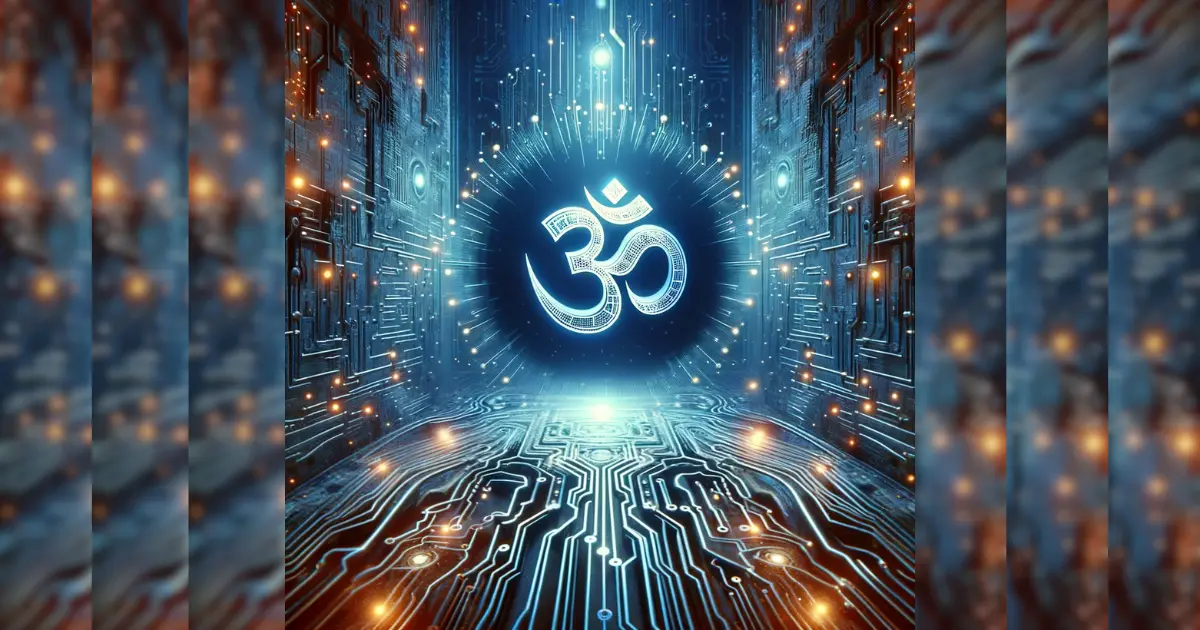A Canadian-Indian director's poster for the film 'Kaali' sparked outrage some time ago. The poster showed a woman dressed as Goddess Kālī smoking and holding an LGBTQ community flag. Such depictions continue to be put out in pop culture and through various media formats.
Freedom of expression is all fine, but it cannot descend into insulting Sanātana Dharma, where blasphemy as a concept does not exist.
When Western Indologists like Wendy Doniger eroticize Hindu gods and scriptures, or use Freudian lenses to evaluate Ramakrishna Paramhansa, there is tremendous intellectual violence on a culture - yet, we are never able to formulate a response.
Distorting and trivializing Tāntrika traditions by seeing them as an infringement on morality is a recurring theme in Western media, the film industry, or academia. As Śrī Nithin Sridhar points out, depictions like ‘hot,’ ‘a monstrous mother with a penis,’ ‘representing male transsexual fantasies,’ ‘a castrating female,’ ‘a prostitute,’ ‘having many affairs,’ and such are highly sexual and perverse interpretations of Goddess Kālī. These are completely alien to Hindu worldviews and iconography.
It is unfortunate that many Hindus internalize these descriptions. The iconography of Kālī represents many ideas in the Tāntrika traditions, but the underlying theme is mokṣa, by cutting us free from bondage and ignorance. However, such revered iconography and ideas do not mean anything to people who refuse to engage with the traditionalists, in an attempt to further themselves. Rather, they are keen on ‘interpreting’ and distorting our devas and devīs with their own frameworks, which are foundationally rooted in the Abrahamic world view of One Single True God and many ‘false’ gods.
Balagangadhara Rao in “An Open Letter to Jeffrey Kripal”, says that such descriptions trivialize, distort, and deny the experience of another culture towards its saints and gods1. Western culture and those taken by it insist on looking at other cultures from their own perspective, believing that it is the only experience possible in the world.
This is the root of the feeling of wrongness — someone else’s experience with the world makes our experiences inaccessible to us by trivializing, denying, and distorting them.
Some Indians protest in various forms, rarely even physically, because they believe that this situation is morally wrong. But these protests face the ever-present threat of the label of ‘Hindu fundamentalism.’. There is a sense of cognitive wrongness too. Nevertheless, the reaction to being called Hindu fundamentalist is often complete silence, as one simply does not know how to counter-express. The description ‘Hindu fundamentalist’ not only denies the existence of Indian traditions as alternatives to Western discourses; but also results in a caricatured, distorted perception of anything competing with the Abrahamic worldview.
Scholars who attempt to impose religious constraints on Indian traditions fundamentally fail to understand their essence. These traditions exist with the fundamental idea of an ‘indifference to differences’ that transcends the standard secularist discourses for harmony— ‘tolerance’ or ‘mutual respect.’ Sanātana Dharma has any number of offshoots and branches: Vaidika and the Tāntrika; Buddhist and the Jain; Śaiva and the Vaiṣṇava; Śākta and the Sikh; Arya Samaj and Kabirpanth; worshippers of Ayyappa, Doni-Pollo, and Sarna; and so on. All these branches come under the category of ‘Hindu’ as Abhas Chatterjee explicates clearly in his short book ‘The Concept of a Hindu Nation.’ As a constructed entity, unfortunately, our thinkers and the Constitution makers could not properly define the scope of the word ‘Hindu.’
For political and legal purposes, the word Hindu is still in a negative format for defining anyone who is not a Muslim, Christian, Parsi, or Jew. However, in the social understanding or when trying to fissure the society, the word ‘Hindu’ becomes applicable to a narrow domain of the people following the Vaidika traditions, and some from the non-Vaidika traditions.
Unfortunately, the semantics of words like ‘Hindu,’ ‘Hinduism,’ and ‘Hindutva’ have never been clearly articulated in the Constitution or the parliamentary debates at independence. Finally, we only have a negative definition of a Hindu, who is, ironically, in the same understanding of Savarkar, as someone who is not a Christian, Muslim, or Jew. How does Sanātana Dharma come into the picture? There can be many descriptions and one such could see Sanātana Dharma as a conglomerate of many traditions, both Vāidika and non-Vāidika in character. Today, the Constitution and the judiciary understand and accept Buddhists, Sikhs, and Jains as Hindus. However, the popular understanding of the ‘Hindu’ society proper excludes the non-Vāidika traditions like the Buddhists, Jains, and Sikhs. In such a popular understanding, the Hindu society majorly consists of two parallel systems: Vaidikam and Tāntrikam.
The practices of the latter are clearly Śiva-Śakti worship. The Tāntrika practices range from simple Grāma Devatā (village deity) worships to more esoteric ones. At the extreme end, there might be practices that can offend one’s sensibilities as they involve uninhibited sex, alcohol, blood, and meat. The relationship between the Vaidikam and Tāntrikam methods has varied, ranging from complete shunning (as in the extreme Vāmācāra practices), to indifference, or mutual give and take.
At no point perhaps was there a violent suppression of one by the other.
This reciprocal exchange is characteristic of a traditional pagan land. Many rituals involving Kālī, Jagannath Puri, Sammakka-Saramma, and other local deities involve meat offerings, animal sacrifices, alcohol, and other questionable practices. These are just dynamic interfaces for Vaidikam and non-Vaidikam practices to interact with each other. It is not subjugation, oppression, or a violent takeover. More importantly, it is not a tool for taking liberties with Hindu deities and making free interpretations.
The colonial-missionary misperception and intentional manipulation of perception on the Śiva-Śakti traditions finally culminated in narratives of Dravidianism, demonolatry, untouchability, and a detachment of many groups from the main body of Hinduism, as Sudha Mohan shows in his book Sivasya Kulam. The projection of these traditions as oppressed non-Hindus or non-Aryans by colonial-missionary forces was a useful strategy for both conversion purposes, and for creating a significant rift in Hindu society.
The distortion of non-Vaidika traditions led to many disastrous consequences, with Dravidianism being the most glaring, along with the pushing of traditional medicine into the realm of the ‘primitive.’ In fact, many Buddhist practices were based on Tāntrika rituals, demonstrating a clear mutual exchange of practices and an inherent harmony. Nevertheless, the colonial enterprise of pitting Buddhism as standing against Hinduism has largely been successful.
Similarly, the depiction of Mother Kālī in any way one pleases is a singular attack on our culture and is ‘not OK.’. There should be a concerted attempt by all intellectuals and the masses to oppose such narratives, and dismantle toxic interpretations and attacks on our culture. Unreasonable physical violence is never an answer, of course. Such responses to disagreements or criticisms are completely antithetical to the nature of Sanātana Dharma, which is a rather huge conglomerate of many traditions living with peace and harmony.
Religions say, ‘I am right, and you are wrong,’ which breeds intolerance and othering. Whereas traditions say, ‘I am right, but you are not wrong,’ which provides a basic space for other’s beliefs, if not a symbiotic growth. Traditional lands maintain spontaneously generated harmony without requiring state authoritarianism. This was the key to success in Bhārata for millennia.
References
- ‘Reconceptualizing India Studies: India and Her Traditions’; ‘An Open Letter to Jeffrey Kripal’, Balagangadhara Rao.
- ‘The Concept of a Hindu Nation’, Abhas Chatterjee.
- ‘Sivasya Kulam’, Sudha Mohan.







